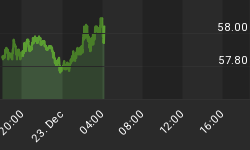The land of the rising sun may not observe daylight savings time, but the sunset on its currency is largely observed by global currency markets - at least against the high yielding FX such as the USD (10.2% year to date), Aussie (7.2%) and British pound (1.4%). The recurring question in FX markets remains: "How long will the US dollar continue to damage the Japanese currency in the face of the looming end to the Bank of Japan's 4 ½ year old quantitative easing policy and persistent evidence of economic improvement?"
On Thursday, BoJ governor Fukui shed more light on the timing of ending the current policy when he said the Bank "does not entirely dismiss the possibility [that the quantitative easing will end) before fiscal 2006". On Friday, Japan's manufacturing PMI rose to 54.5 in September, its higher level in 13 months as firms were unable to meet mounting demand. The latest decline in inflation was a minimal y/y 0.1% in August, while average spending rose 3.2% in August and unemployment fell to 4.3% in August.
Through its quantitative easing policy, the Bank of Japan's aims at targeting the availability of credit as made by the amount of liquidity provided in the monetary system rather than targeting a numerical target rate of interest. Speculation has been highlighted by an emerging dissent within the 9-member BoJ policy board between those who state the central bank must not reduce its 30-35 trillion yen liquidity target for banks until inflation rises above zero, and those who call for a reduction in the target before the quantitative easing policy is completely phased out.
The BoJ has varied the ways it expressed its optimistic assessment on the economy. Earlier this month, BOJ Governor Toshihiko Fukui said inflation: "will show year-on-year growth of zero percent or mark positive growth heading into year-end", a cogent which upgrade from his previous remarks forecasting positive CPI in Spring of next year. Although the impact of rising oil prices on overall CPI remains modest, Fukui's altered forecasts imply mean that the Bank is starting to telegraph to the markets its intention to end the policy of quantitative easing. Aside from rhetoric, the Bank of Japan has resorted to its monthly report in which it upgraded its assessment for the economy for the third straight month.
High-yielding Flows out of Japan
But many have spoken about puzzle of the declining yen in the face of Japan's outperforming equity markets ascending to 4-year highs. Despite the 14 consecutive weeks of net foreign inflows into Japanese equities between mid June and mid September, the Japanese currency dropped 5% to 2-month lows against the dollar. Markets then began to conclude that Japanese residents' flows abroad merited larger scrutiny.
The chart below shows Japanese investors were net buyers of foreign bonds for 10 consecutive weeks between early July and early September, averaging a weekly net outflow of 419 billion yen during the period. Year-to-date (as of Sep 19), Japanese outflows into foreign bonds totaled 102 trillion yen, versus a net inflow of 80.7 trillion in foreign purchases of Japanese stocks.

Speculators Show no Mercy
Futures speculators have unabashedly shunned the Japanese currency, raising their yen bearishness to unprecedented levels against the dollar. The chart below shows that short-yen/long dollar contracts hit a high of 63,076 contracts in July, the highest since May 1999. Since 2004, the average weekly number of yen/dollar futures contracts stood at 6,175 net shorts (short yen-dollar long), while the weekly USD/JPY rate averaged at 107.84. This compared to 2,996 net longs and a rate of 114.64 when extending the period back to 2002. The fact that the average yen rate has strengthened while the average net position leaned against the currency underlines speculators' quest for short-term opportunities despite the generally improving macro outlook for Japan.
Looking forward, the looming end of the Bank of Japan's quantitative easing by Q1 2006 coupled with and an eventual subsequent yuan revaluation against the US dollar, explains our medium-term yen bullish position, with 108 by year-end and 103 by end of Q1.

Tankan to Broaden the Picture
An expected improvement in Monday's release of the quarterly tankan survey on corporate sentiment might serve as an added boost for equity investors but does not necessarily alter the short-term dollar/yen picture. Preliminary estimates expect the index of large manufacturers to have risen by 2 points to a reading of 20 in Q3 after a 4-point increase in Q2.
Aside from the headline index of large manufacturers, the survey's impact on currency markets is shaped by companies' plans for capital expenditure and their forecast for the Q4 tankan. The average USD/JPY rate used in these forecast is also mulled by FX markets. Large manufacturers' capex forecast for FY05 stood at 16.2% y/y from 18.1% for FY 04. More importantly, large enterprises' capex plans for FY 05 were raised to 9.4% from 4.5% in FY 04. A more helpful indicator is whether small firms will lift their plans for capital expenditures.

The USDJPY chart below shows the dollar to have largely peaked at its 113.49 high, falling short of the rising channel resistance neat 113.70. The upside barriers are increasingly accumulating at 114.51--38% retracement of the 135.39-101.59 decline, and the 200-week MA at 115.13. We expect USDJPY to test the 112.20 preliminary support early next week before attempting to regain the 113.30-40. Medium term consolidation seen following at 111.00-112.20 in most of October, until further clarity is obtained from the Bank of Japan and the Fed.

















